For Sale!
Historic Seattle is selling the Egan House.
Historic Seattle is selling the Egan House.
Each year, Historic Seattle honors outstanding people and projects in preservation at our Annual Preservation Celebration. To do this, we need your help!
We want to hear from our entire preservation community about what preservation projects YOU think are worthy of celebrating. The deadline to submit is Friday, May 10.
Preservation is a Public Benefit
In the past month and a half, preservation supporters in Seattle came together to advocate for maintaining the integrity of the landmark designation process. Since 1973, the City of Seattle has designated approximately 450 landmarks that are subject to protection by the Landmarks Preservation Ordinance (LPO). Ostensibly, the recent controversy revolved around the landmarked Seattle-First National Bank Building (SFNB), located at 566 Denny Way in Uptown, but it became much bigger than that one landmark.
Background
The Seattle-First National Bank Building was designated a Seattle landmark in 2006 under four (out of six) designation standards, a strong statement by the Landmarks Preservation Board (LPB) in recognizing the significance of the building. The exterior and the site were included in the designation. Walgreens purchased the property in 2007 (one year after the designation), adapted the former bank into a retail store, and worked with the Landmarks Preservation Board to reach a Controls and Incentives (C&I) agreement in November 2021 that would apply to the site and exterior of the building. (Controls help to protect a landmark and economic incentives can help an owner maintain a landmark.) The final step in the landmark designation process is City Council approval of the designating ordinance and adoption of the C&I agreement.
Because the SFNB is located in the Uptown neighborhood of Queen Anne, it is eligible as a landmark sending site for Transfer of Development Rights (TDR). This is an important financial incentive that became available for Uptown only in the last few years. The owner can sell TDRs and use the money to maintain the landmark building. A developer who owns a property in Uptown that qualifies as a receiving site can purchase the TDRs to benefit their housing project by increasing FAR (and therefore, additional units). This is a win-win for preservation AND housing. It’s both/and, not either/or.
The Issue
OK, great! So, what was the problem? On December 9, 2022, the City Council’s Neighborhoods, Education, Civil Rights, and Culture Committee met to review Council Bill 120312 (an ordinance relating to historic preservation; imposing controls upon the Seattle-First National Bank Building). At that meeting, four members of the Committee questioned why the Seattle-First National Bank Building was landmarked (they did not believe it was significant), wondered what public benefit the landmark offered, and cited the need for more housing in Uptown, a dense urban neighborhood. Essentially, the Committee believed this landmark was getting in the way of more housing and they wanted to dictate the use on this privately owned property. However, the LPO does not give the LPB nor the Council authority to control use in a landmark building or site. The property is not for sale and there are no redevelopment plans for the site. Uses other than housing are also allowed on the parcel.
The Council Committee recommended to the full City Council that they reject the designating ordinance. We saw this recommendation as a major threat to preservation in Seattle and the City’s preservation program. Removing C&I would leave the landmark vulnerable to demolition and set a bad precedent that could undermine the landmark designation process for any designated landmark that does not have controls and possibly any future designated landmarks.
The Call-to-Action
CB 120312 was scheduled for the January 3, 2023 City Council meeting and then postponed for another week to January 10, 2023. Historic Seattle, the Queen Anne Historical Society, West Seattle-based advocates, the Washington Trust for Historic Preservation, and many individuals jumped into action in December and January to urge Councilmembers to honor the Landmarks Preservation Ordinance and designation process by passing the designating ordinance and adopting controls and incentives for the Seattle-First National Bank Building. A key message was that preservation and housing are not mutually exclusive—this is a false choice. It’s both/and, not either/or. We also supported a compromise that would place no controls on the parking lot north of the landmark building—making it easier for potential development. Council Central Staff provided an analysis of housing development potential on the parcel. It turns out that retaining the landmark could potentially yield more housing units on the site by using a combination of incentives, bonuses, and creative design of new construction. Detractors argued the parking lot is too small for a high-rise. We beg to differ given the many examples of high-rise residential construction on smaller or similar-size lots in this city.
The road to the January 10 City Council meeting was a wild one! There were three amendments to the original bill. The Council realized it could not de-list or “unlandmark” the building so the designation would remain. It is the role of Council to adopt, modify, or reject controls and incentives for a landmark. The Walgreens lawyer suggested to Council that they pass the designating ordinance but remove controls and incentives. So it became the battle of the amendments. Amendment A (proposed by Councilmember Tammy Morales) was to pass the designating ordinance but place no controls and incentives on the building and site (worst-case scenario in our minds). Amendment B (proposed by Councilmember Lisa Herbold) was to pass the designating ordinance and place controls on the exterior of the building and specific character-defining features on the site, but remove controls on the parking lot. Amendment C (proposed by Councilmember Andrew Lewis) supported Amendment B but would also remove the character-defining features on the site, effectively placing controls on the building, the site between the building and Denny Way, and the site between the building and 6th Avenue N. Are you still with us? Crazy, we know!
Historic Seattle supported Amendment B. And ultimately, we supported Amendment C. The result was City Council voted 9-0 for Amendment C which places controls on the landmark building’s exterior and the portion of the site between the building and Denny Way and between the building and 6th Avenue North.
Ultimately, Historic Seattle is happy with the outcome because City Council’s unanimous vote confirmed the longstanding landmark designation process. The Council’s role is not to “rubber stamp” but to confirm and respect the process. Historic preservation is a public benefit in and of itself and should not be pitted against other public policies. Only 0.5% of parcels in Seattle are designated landmarks or in historic districts. That is a minuscule amount in the grand scheme of the built environment.
A big thank you to all who contacted City Councilmembers advocating for the preservation of this modern landmark and for respecting the designation process. Every communication in support was important. Your voices were heard! Council President Debora Juarez’s recent weekly newsletter shows that Council received 124 letters in support of CB 120312 and the compromise amendments and 32 letters in opposition—four times more in support! Finally, we thank City Council for its final decision and particularly Councilmembers Herbold and Lewis for seeking a compromise solution that supports preservation of the landmark and maximizes housing potential.
Learn more:
Materials related to CB 120312
Feliks Banel, KIRO Newsradio, “Preservation groups: Seattle City Council making mistake with historic bank.” Click here to read or listen to this story!
Emma Hinchliffe, Daily Journal of Commerce, “Compromise reached in debate over future of landmarked Uptown bank building.”
We need YOU to urge City Council to vote in favor of Amendment B, a pro-housing and pro-preservation resolution, to the Controls & Incentives (C&Is) agreement for the Seattle-First National Bank (SFNB)* building at tomorrow’s January 10 Council Meeting at 2:00 PM!
Click here to read all supporting documents for the SFNB bill (CB 120312), including Proposed Amendment B. Sponsored by Councilmember Lisa Herbold, the amendment aims to meet demands from Council for housing development on the site while protecting and preserving the designated landmark by adopting C&Is for the building only:
“This amendment would remove the surface parking area on the north side of the Seattle-First National Bank building from the designated features of the landmark. Development would be permitted on the parking area, but controls and incentives would continue to apply to the building on the site, the sign post, the drive-through area, and landscaping between the building and the street.”
NOW is the time to Tell the Council that a vote in favor of Amendment B honors the Landmarks ordinance and process by adopting C&Is for the Seattle-First National Bank building and maximizes housing development on the parking lot:
Questions? Contact Eugenia Woo, Historic Seattle’s Director of Preservation Services, at eugeniaw@historicseattle.org.
*ICYMI: The Seattle-First National Bank Building (SFNB), located at 566 Denny Way in Uptown was designated a Seattle landmark in 2006. Walgreens purchased it after the designation, adapted the former bank into a retail store, and worked with the Landmarks Preservation Board (LPB) to reach a Controls and Incentives (C&I) agreement (in November 2021) that would apply to the site and exterior of the building. The last step in the landmark designation process is City Council approval of the C&I agreement, but some members of City Council seem to believe that preservation and housing are mutually exclusive. This is a false choice. It’s both/and; not either/or.
If this amendment to the C&I agreement is not adopted, the landmark will be vulnerable to demolition, setting a dangerous precedent for ALL future and current Seattle Landmarks without controls and disregarding a tried and true program (Transfer Development Rights) that allows preservation to be an asset in creating more housing within Seattle.
Feliks Banel with KIRO Newsradio has got it exactly right: Seattle City Council is making a mistake with the Seattle First National Bank Building (SFNB). Click here to read or listen to this story!
Having postponed the full council vote until Tuesday, January 10, City Council is still threatening Seattle’s robust landmarking process by not adopting already agreed upon Controls and Incentives (C&Is) for the SFNB. Instead, they may adopt an amendment, written up by the lawyers hired by Walgreens, to eliminate all controls and incentives. Some members of City Council seem to believe that preservation and housing are mutually exclusive. This is a false choice. It’s both/and; not either/or.
With the full council vote already delayed until January 10, NOW is the time to make your voice heard! Join us in telling the Council that denying C&Is for the SNFB:
A) sets a dangerous precedent for ALL future and current Seattle Landmarks without controls,
B) disregards a tried and true program (Transfer Development Rights) that allows preservation to be an asset in creating more housing within Seattle,
C) and insults our and your belief that preservation enriches the lives of all in Seattle.
AND, demand that City Council honor the Landmarks ordinance and process by adopting controls and incentives for the Seattle-First National Bank building.
Click here to review the 1/10/23 City Council Meeting Agenda, which includes three options to provide Public Comment to the Council:
Seattle City Council will vote in their January 3rd meeting (this coming Tuesday!) to adopt or deny Controls and Incentives (C&Is) for the Seattle First National Bank Building at 566 Denny Way in Uptown. A vote to reject these C&Is subjects this existing Seattle Landmark to NO protections and increases its vulnerability to demolition.
Join us in telling the Council that denying C&Is sets a dangerous precedent for ALL future and current Seattle Landmarks and demand that City Council honor the Landmarks ordinance and process by adopting controls and incentives for the Seattle-First National Bank building.
Click here to view the January 3, 2023 City Council Meeting Agenda, which includes the following options to provide Public Comment to the Council:
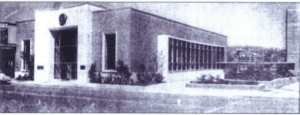
Seattle-First National Bank. Image credit: Construction News Bulletin, 1950.
Here’s the deal—we’re in a pickle: the Seattle-First National Bank Building (SFNB), located at 566 Denny Way in Uptown was designated a Seattle landmark in 2006. Walgreens purchased it after the designation, adapted the former bank into a retail store, and worked with the Landmarks Preservation Board (LPB) to reach a Controls and Incentives (C&I) agreement (in November 2021) that would apply to the site and exterior of the building. The last step in the landmark designation process is City Council approval of the C&I agreement, but we’re concerned Council may reject controls and incentives, thereby leaving the landmark vulnerable to demolition.
We need YOUR Help! Write to City Council before January 3 (ideally by December 23) and demand they honor the Landmarks ordinance and process by adopting controls and incentives for the Seattle-First National Bank building (reference CB 120312). A decision to reject controls and incentives for SFNB puts preservation and landmarking at risk! Contact all Councilmembers by emailing council@seattle.gov.
Context for said “pickle:” until recently, the SFNB has been declared as a building of significance (by virtue of its landmark designation), and a C&I agreement has been signed in which economic incentives are available to the property owner in exchange for committing to maintain the building.
You may recall from our ongoing Showbox advocacy efforts that landmark designation alone does not save buildings – controls and incentives are critical to protecting the places we love. The SFNB, having a designation and C&I agreement signed, means this building is well on its way to being preserved as an asset and public benefit to the City of Seattle. The final step is for the City Council to adopt Council Bill 120312.
OK, great! So, what’s the problem? On Friday, December 9, several members of the City Council’s Neighborhoods, Education, Civil Rights & Culture Committee met and challenged, without documentation or justification, the Seattle-First National Bank building’s landmark designation and the need to place controls and incentives on the building and site.
In advance of the meeting, Seattle City Council Central Staff provided the Committee with a 10-page memorandum detailing the landmarking process and recommendations for next steps. Additionally, the Committee received a joint letter of support for adopting controls and incentives for SFNB from Historic Seattle and the Queen Anne Historical Society.
The Council Committee’s recommendation to reject controls and incentives without reasons relevant to the Landmark Preservation Ordinance and in contradiction to the Landmarks Preservation Board (a group consisting of volunteers appointed by the Mayor and confirmed by City Council) is unprecedented and a major threat to preservation in Seattle and the City’s preservation program.
On Tuesday, January 3, 2023, Seattle City Council will decide whether to adopt the jointly agreed Controls and Incentives for the Seattle-First National Bank building. If rejected, the Council’s decision could undermine the landmark designation process for any designated landmark that doesn’t have controls and possibly any future designated landmarks.
This is NOT OK! Again, we urge you to write to City Council (council@seattle.gov) before January 3 (ideally by December 23) and demand they honor the Landmarks ordinance and process by adopting controls and incentives for the Seattle-First National Bank building (reference CB 120312).
Questions? Contact Eugenia Woo, Historic Seattle’s Director of Preservation Services, at eugeniaw@historicseattle.org.
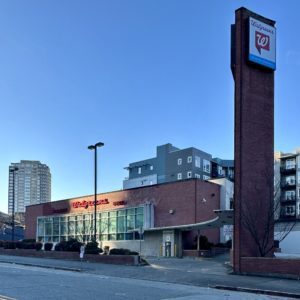
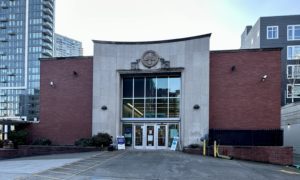
By Ruth Danner, President – Save the Market Entrance
The following is part of a series of guest blog posts submitted by members of the Historic Seattle community. The views and opinions expressed in guest posts are those of the authors and do not necessarily reflect the positions of Historic Seattle. As part of our mission, Historic Seattle is supporting Save the Market Entrance’s advocacy and communications work to landmark the Hahn Building.
With ground floor storefronts built in 1897 and two floors for workforce housing added in 1908, the Hahn Building/Hotel Elliott stands proudly at the southeast corner of Seattle’s intersection of First and Pike, at the main entrance to Pike Place Market. While Pike Place Market is a designated City of Seattle historic district (Pike Place Market Historical District) and listed in the National Register of Historic Places as the Pike Place Market Historic District, the historic buildings on the east side of First Avenue have been left to fend for themselves.
Its historic timeline goes back to the early 1880s arrival of Robert Hahn. In 1889, at the time of the Great Seattle Fire that devastated most of Pioneer Square, Hahn operated a wood-frame saloon and beer garden on this site. After the fire, it was said to be the last place standing for a man to buy a beer. Following the fire, wood structures were out and brick was in, and in 1897, Hahn built the structure under nomination as a one-story, brick building.
A decade later, two stories were added to the existing structure just as Seattle prepared for the Alaska-Yukon-Pacific Exposition in 1909. Those two new floors were dubbed Hotel Elliott, which provided private semi-permanent housing for Seattle’s growing workforce, one of the first single-room-occupancy (SRO) hotels to offer private baths with running hot and cold water. The Hahn Building/Hotel Elliott is prominently featured in historic photos of the Market Entrance across the decades. Along with the Hotel Elliott, the ground floor has retail has hosted a number of commercial ventures—from long-time tenant Owl Drugs to the infamous International Donut Shop.
In the massive reinvigoration on Pike Place Market in the 70s, blacktopping on Pike Place from Pike to Virginia was returned to its former bricked cobblestones out to and including the intersection at 1st and Pike that tied the four corners of the Market together. In 1981, the Hahn family, perhaps inspired by the market’s facelift and newly returning popularity undertook a beautiful, historically sensitive remodel. Identifying Hotel Elliott as affordable housing, the City of Seattle allocated $500,000 to reinforce the structure with seismic retrofitting. Hotel rooms continue to occupy the upper two floors operating as the Green Tortoise Hostel since 2005.
Twice since the current owners purchased the Hahn in 1986, they have presented the Landmarks Preservation Board with anti-nominations designed to argue against historic significance in an effort to clear the way for future demolition (in 1999 and again in 2014). But the five-year limit in the Landmark Preservation Ordinance that precludes another nomination to be considered has passed (as of December 2019), and the door is open for the public to argue their own case for the importance this building plays to our city and beyond.
The Hahn Building is not currently protected, and the current owner has plans to demolish the Hahn building and replace it with a 14-story boutique hotel. On December 2, at 3:30 pm the Landmarks Preservation Board will meet to consider our nomination, which we submitted in December 2019. We hired Katie Pratt and Spencer Howard of NW Vernacular Historic Preservation to dig a little deeper into the Hahn’s history and importance at this important intersection. What they found is compelling. Preservation of this building is essential to the symmetry and historical authenticity to this treasured four corner Market entrance and intersection.
We need your help! Please send written comments in support of landmarking to Sarah Sodt, the City of Seattle Historic Preservation Officer, via sarah.sodt@seattle.gov by or before Tuesday, December 1. Comments must relate to one or more of the six criteria for landmark nomination/designation. More information is available here.
Photo by Shree Ram Dahal
By Cindy Safronoff
The following is part of a series of guest blog posts submitted by members of the Historic Seattle community. The views and opinions expressed in guest posts are those of the authors and do not necessarily reflect the positions of Historic Seattle.
The classical revival style church edifice on Greek Row in the University District has been an important community gathering place for nearly a century.
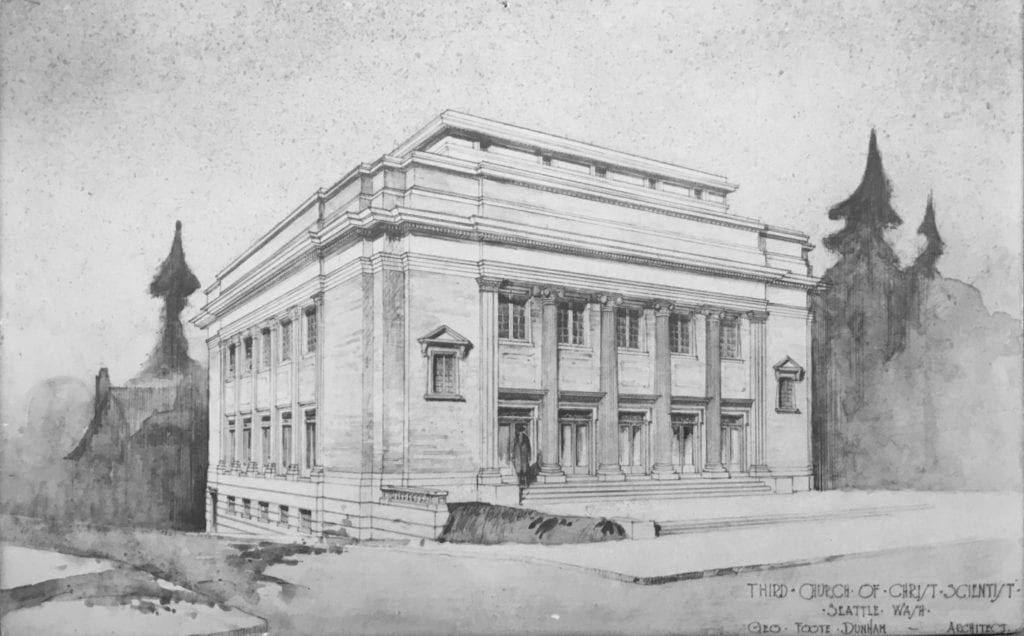
Architectural rendering of Third Church of Christ, Scientist, Seattle, by architect George Foote Dunham, 1919 (Third Church of Christ, Scientist, Seattle)
The edifice built by Third Church of Christ, Scientist, is twin sister to Fourth Church, now known as Town Hall Seattle. It was designed by the same architect in a similar style and layout and built by the same general contractor during the same time period. Although smaller overall, the auditorium has the same elegant curved ceilings, indirect lighting, and similar Povey Brothers windows with Dannenhoffer art glass. The decor of the auditorium was intended to express sunshine, sky, and clouds. The Greek motif was said to express the simplicity of truth.
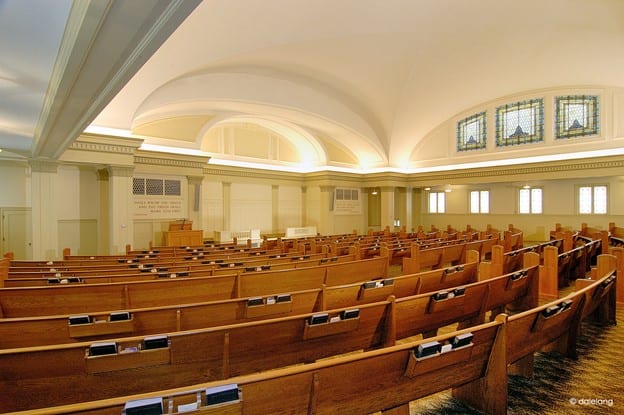
Third Church of Christ, Scientist, Seattle, auditorium as it was when it was a Christian Science church (Photo: Dale Lang)
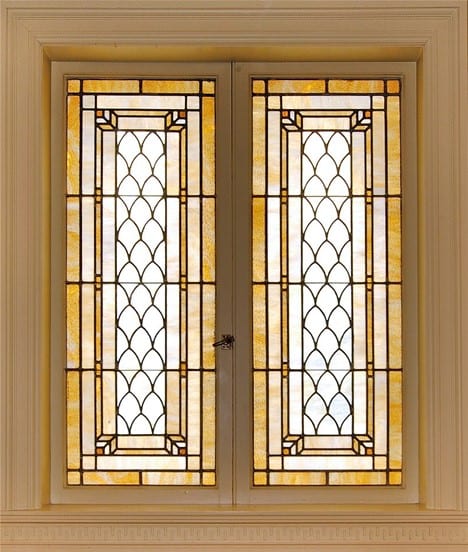
Lower auditorium stained glass windows (Photo: Dale Lang)
The building project was launched by Third Church of Christ, Scientist, the week of Easter 1919 as the Spanish Influenza pandemic was fading out. Shortly after the Building Committee selected George Foote Dunham to be their architect, he sent them a watercolor rendering to show the completed building. The painting hung in the Christian Science Reading Room in the University State Bank Building at 45th and University – where church services were being held at the time – to inspire their members to contribute to the building fund. It took three and a half years to complete the building, due to construction delays caused by funding problems. For an entire year, the site on Northeast 50th Street and 17th Avenue Northeast (then called “University Boulevard”) sat inactive with completed walls and roof but no windows or doors. Members took shifts standing watch at the building at night to protect it from vandalism. After completing financing for the project in early 1922, the building was completed within the year. Three overflowing opening services were held on Sunday, November 12, 1922.
The church edifice was officially dedicated seven years later. The Great Depression had begun, and – even before the economic collapse – Third Church had been struggling to pay off its overdue mortgage bond. After the infamous stock market crash on October 24, 1929, the other Christian Science churches contributed their next Sunday collections to the cash-strapped U-District congregation, enough to eliminate all their debt. Dedication services were held, again with three overflowing services, on Sunday, November 24, 1929.
The U-District congregation was youthful, which is perhaps unsurprising for a rapidly growing start-up church near a university. Most of the members of the Building Committee, which was representative of the overall membership at that time, were in their 30s. Christian Science then was one of the most popular religious preferences among University of Washington (UW) college students, especially among the female students. Two members of the Building Committee, Ruth Densmore and Helen Lantz, had recently graduated from the UW with graduate degrees and were married to UW professors.
In the early twentieth century, Christian Science offered a new religious alternative that empowered women. Founded in 1879 by a woman, Reverend Mary Baker Eddy, The First Church of Christ, Scientist, in Boston, recognized equality of the sexes, preached support of women’s rights, and normalized women as church service officiants. Around 90% of Christian Science practitioners, the closest equivalent to clergy or ministers, were women. In the history of Christian Science in Seattle, women played a prominent founding role. Christian Science was planted in Seattle in 1889 by Mary Baker Eddy’s student Julia Field-King. The U-District church was organized in 1914 by Mollie Gerry. The Sunday School teachers were predominately women. As was typical of Christian Science branch churches from the earliest days, the Board of Directors and the Building Committee at Third Church was gender-balanced. The membership body, the ones who made the most important decisions in this democratically governed church, such as whether to build an edifice and how to pay for it, was comprised of a super-majority of women.
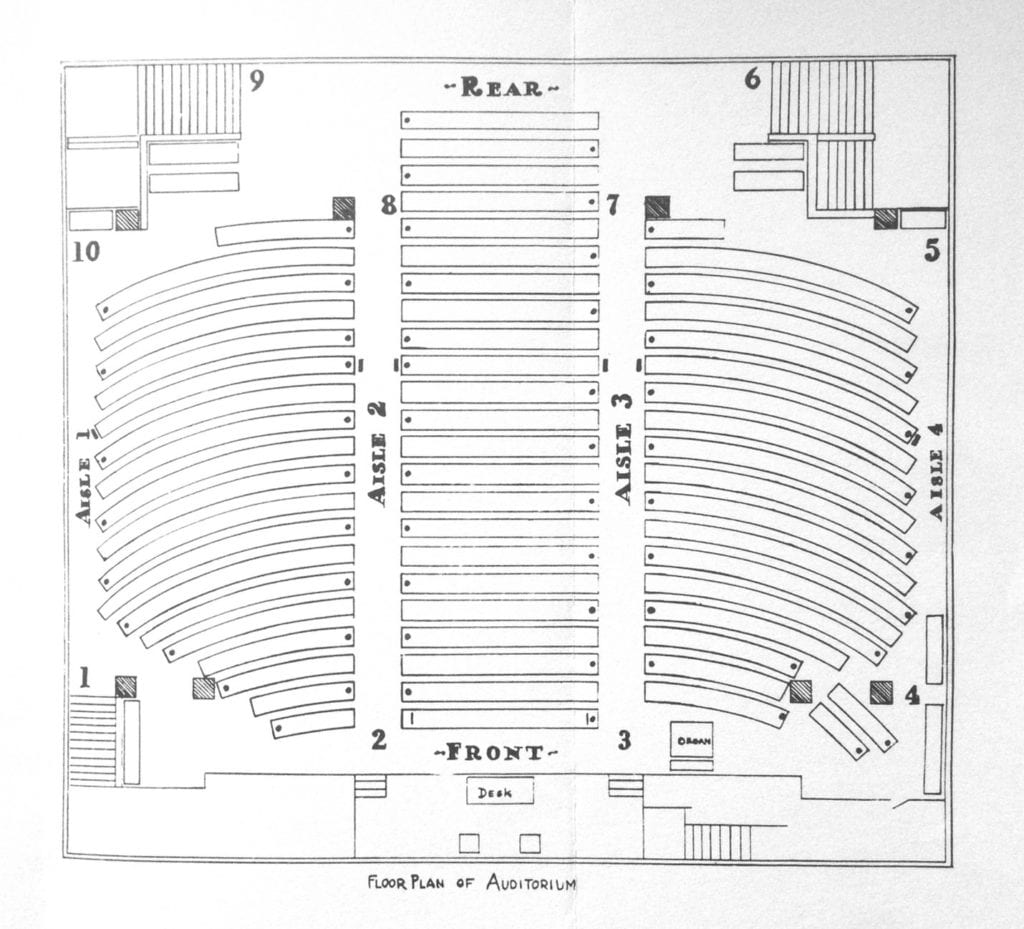
Floor Plan of Auditorium, as originally furnished with seating for 860
The Third Church auditorium was originally designed to seat 860, although there were concerns that it would not be large enough to accommodate continuing growth. Upon moving into the new building in 1922, the church started holding a second Sunday service in the evening, a schedule that continued for decades. By the 1940s, the foyer level was filled with folding chairs for overflow seating, and the church decided to help fund a new church building in nearby eastern Green Lake. The approach of cooperative financial support between the area Christian Science churches, of which Third Church was beneficiary in 1929, continued through the Great Depression and for several decades after, paying off church mortgages one by one and enabling church building in nearly every district in Seattle, even during the most difficult economic conditions. At the peak of the movement in the 1960s, there were 16 Churches of Christ, Scientist, Seattle. Once the need for church edifices was met, they continued cooperative building for the Christian Science Organization on University Way, a nursing facility, and the Christian Science Pavilion at the 1962 World’s Fair.

Like the Fourth Church building, the Third Church foyer fills most of the main floor of the building, allowing the entire assembly to mingle after meetings. (Photo: Dale Lang)

The foyer level as it was originally, showing usher stations by number. Churchome has converted the Reader and Soloist offices into additional bathrooms.
Several generations of Christian Scientists grew up attending Sunday School in the basement level of this building and socializing in the large foyer after services. In the late twentieth century – along with churches of nearly every denomination – the population of the Christian Science church declined and no longer needed so many large edifices. The story of Third Church’s 2005 decision to sell its building was told in detail in the May 2007 issue of Seattle Metropolitan magazine, with Kathryn Robinson’s article “Cross Purposes” portraying Third Church as exemplifying global trends in the religious landscape, representative of the U-District, Seattle, and other communities throughout the country.
The entire membership body of Third Church was involved in deciding which purchase offer to accept. They democratically selected an offer that would preserve the building by converting it to an event venue for lectures, similar to Town Hall Seattle. In a last-minute turn of events that surprised even the members of Third Church, however, the building went to City Church, now known as Churchome. Churchome did many of the same building improvements that an arts and civics organization would have: new carpets, fresh paint, theater lights in the auditorium, an expanded stage, and additional bathrooms. Listing the building for sale in April 2020, it now seems Churchome no longer needs the property. The Third Church building needs a new owner, ideally one who will preserve it for future generations.
Christian Science churches are known to be well-suited for reuse, in part because of their lack of religious symbolism. In Seattle, nearly all the edifices originally built as Christian Science churches still stand. Some have been landmarked, including First Church on Capitol Hill (now luxury condominiums), Sixth Church in West Seattle (now an event venue), and Seventh Church on Queen Anne Hill (now Church of Christ). Eleventh Church, the Green Lake church that took the 1940s overflow from Third Church, is now owned by a Taiwanese Christian church. Dunham’s designs in particular have proved adaptable. Besides Fourth Church’s conversion to Town Hall Seattle, Dunham’s edifice in Victoria, British Columbia, still owned by First Church of Christ, Scientist, Victoria, doubles as a community event venue. His edifice in Spokane, Second Church, is now owned by Holy Temple Church of God.
It is sometimes said of old buildings, somewhat remorsefully, “if only these walls could speak,” as though the decades of events that took place inside and around them are unknowable to us today. But in the case of Third Church, its historic happenings are beginning to be heard in detail all around the world. Its well-documented, colorful, and important story is unfolding through narrative nonfiction podcast and book. As a representative of a significant global movement, including establishing women’s rights and gender equality in religion, the building stands as a monument to progress. Regardless of the building’s future, its legacy will be shared with the world. For a preservation-minded owner, the building’s emerging fame could enable fundraising efforts to potentially draw on supporters far beyond Seattle.
Cindy Safronoff is an independent scholar who has presented her research on the history of the Christian Science movement in Seattle at academic conferences in Taiwan and Italy. Her previous book, Crossing Swords: Mary Baker Eddy vs. Victoria Claflin Woodhull and the Battle for the Soul of Marriage, won ten book awards and was featured in the Sunday Boston Globe. Her newest book, Dedication: Building the Seattle Branches of Mary Baker Eddy’s Church, A Centennial Story – Part 1: 1889 to 1929, has been recently released. The audio version is available now as a podcast, “Dedication: A Centennial Story.”
Note: A demolition permit was filed by Churchome in May 2020, pending review by the City of Seattle. Sale was pending in August 2020 but the property is back on the market as of this writing.
Additional reading: “Another Old Church Building on the Edge of Demise,” Clair Enlow, postalley.org, July 22, 2020.
There’s no shortage of preservation advocacy issues happening. Here’s the latest:
Spud – Next Modern Landmark? Sullivan House – Next Capitol Hill Landmark or Tear-down?
The February 7th Seattle Landmarks Preservation Board (LPB) meeting should shape up to be a pretty interesting one with a ca. 1898 house and a 1959 Modern commercial building up for consideration by the Board.
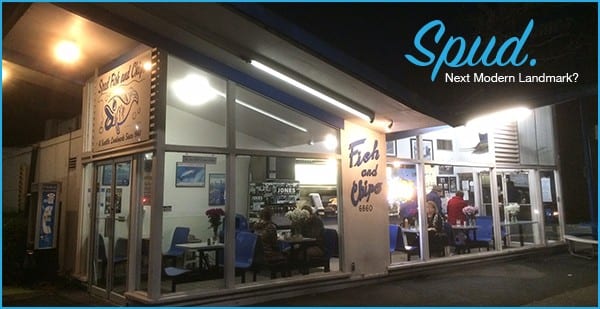
The Spud Fish & Chips Building (6860 East Green Lake Way N) is an excellent example of a mid-century Modern commercial building with elements of the Googie-style. The iconic design of this legacy business is one of the few remaining intact buildings of this style in Seattle. This property is also threatened with demolition and redevelopment. Historic Seattle will be supporting the nomination of the Spud Fish & Chips building.
The Patrick J. and Joanna Sullivan House (1632 15th Avenue at E. Olive Street) on Capitol Hill will be up for landmark designation. Historic Seattle supports the designation of this significant property because the house embodies the distinctive characteristics of the Queen Anne style; represents an outstanding work of the architecture firm of Josenhans and Allen; sits prominently at the southeast corner of 15th Ave and E Olive Way, presenting a striking contract to surrounding buildings; and is associated with a prominent businessman from the late 19th and early 20th century.
Currently threatened because it’s for sale for $2.2M, we hope to see the property designated and sold to someone who intends to restore the structure, which actually houses five-units.
You may download the nomination reports for both properties on the Seattle Historic Preservation Program’s website, under “Current Nominations.”
We encourage you to support the nomination of the Spud building and the designation of the P.J. and Joanna Sullivan House. You may submit written comments via e-mail to Erin Doherty, Landmarks Preservation Board Coordinator, at erin.doherty@seattle.gov, by Monday, February 5th or attend the public meeting on Wednesday, February 7th at 3:30 p.m. and provide comments. The meeting will be held in Seattle City Hall (600 4th Avenue, Floor L2) in the Boards & Commissions Room L2-80.
No Controls on Two Designated Landmarks
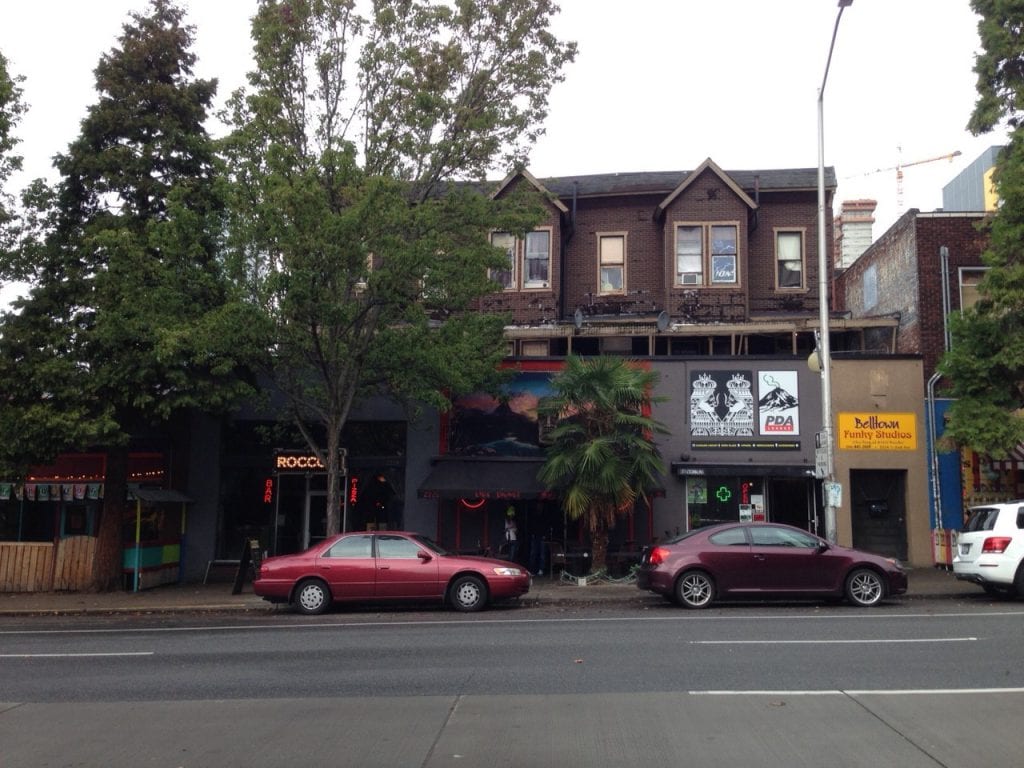
In the past two months, the Seattle Landmarks Preservation Board placed no controls on two designated Seattle Landmarks—the Galbraith House on Capitol Hill (17th and Howell) and the Wayne Apartments in Belltown. Demolition of the Galbraith House began in early January. The Wayne Apartments building is for sale. With no controls, we expect it will also be demolished unless a sympathetic buyer surfaces. Historic Seattle is very disappointed with this outcome for both historic properties. It has been rare for the Board to place no controls on a designated landmark. And now, in the span of two months, this has happened twice. We know these must have been difficult decisions for the Board and City staff. What’s not helping is the current, over-inflated market value of properties in Seattle and the demolition-by-neglect by owners who let their properties deteriorate so the cost of rehabilitation is much higher than if the properties had been maintained over the years. If a developer or property owner can show no “reasonable economic use” for a designated property, then the death knell will surely sound for the landmark. We hope to learn from these recent examples and work with the City to seek stronger protections for designated landmarks. We do not want this be the new normal for designated landmarks.
More info on each property:
Photo credits: Spud (daytime) – Joe Mabel photographer; Spud at night (Docomomo WEWA); Wayne Apartment Building (Historic Seattle)
Calling All Preservation Advocates!
Historic Seattle seeks your help in saving Seattle’s historic schools. We recently learned that a bill has been introduced to the State Senate by Senators David Frockt and Reuven Carlyle (SB 5805) “Concerning the application of landmark or historic preservation regulations with regard to school district property in school districts with more than fifty thousand students.”
In a nutshell, SB5805 seeks to exempt schools in the Seattle School District from the Seattle Landmarks Preservation Ordinance (LPO). The bill states, “For school districts with more than fifty thousand students, school district property shall be subject to state and local landmark or historic preservation regulations only to the extent explicitly approved by the board of directors of each school district.”
The Seattle School District is using the legislature to solve a local issue. Seattle is the only district in the state with over 50,000 students. If the school board does not like the LPO, it should address its issues with the City of Seattle, not the state legislature.
It’s our understanding that all currently designated Seattle School District-owned landmarks as well as all future designated landmarks owned by the School District could be affected. Schools could still be designated through the current Landmarks designation process, but the school board would have the authority to “approve” which elements of the landmark ordinance it wishes to comply with. One could designate a school, but the school board would have the authority to ignore any controls and incentives, thereby opening up the possibility of demolition or significant alterations without approval from the Seattle Landmarks Preservation Board.
The bill also refers to “state…historic preservation regulations.” There are no state historic preservation regulations. The Washington Department of Archaeology and Historic Preservation reviews historic preservation issues under SEPA (State Environmental Policy Act). Is the School District also looking to be exempt from SEPA?
Seattle taxpayers have approved millions of dollars in levies for schools, much of which has been used to renovate designated landmarks. If this bill is passed, the school board would have the power to “undo” the will of Seattle voters on past projects.
The bill also sets a bad precedent for other school districts in the state.
What You Can Do
Please submit written testimony, ideally, by Wednesday, January 10, close-of-business day (5 pm), or no later than NOON on Thursday, January 11, to Senator Frockt and Senator Carlyle and explain why you are opposed to this bill (SB5805). Be sure to reference the bill.
We also suggest emailing Senator Lisa Wellman and Senator Christine Rolfes, Chair and Vice Chair of the Senate Early Learning and K-12 Committee. And it’s always a good idea to contact the senator in your own legislative district.
Keep your message short. Bottom line, the Seattle School District should not be exempt from the Landmarks Preservation Ordinance. You might even ask Senators Frockt and Carlyle why they are even supporting such a bill.
If there is a historic school in your neighborhood that is designated a landmark or is a potential landmark, please note the school buildings and say why they are important. Seattle’s historic schools are institutional anchors in every neighborhood. The School District has a duty to maintain and sensitively upgrade these buildings to serve the community.
If you have time to attend a public hearing for the Senate Early Learning & K-12 Education Committee scheduled for Thursday, January 11, at 1:30 pm, we encourage you to provide testimony in person. The hearing takes place in the Senate Hearing Rm 1, J.A. Cherberg Building, Olympia, WA 98504.
Here’s a link to learn more about testifying in Committee in person and via written testimony (scroll down the page for written testimony instructions). http://leg.wa.gov/legislature/Pages/Testify.aspx
We recommend emailing the senators and their legislative aides directly. See contact info below:
Senator David Frockt, David.Frockt@leg.wa.gov; legislative aide Jon Rudicil, Jon.Rudicil@leg.wa.gov
Senator Reuven Carlyle, Reuven.Carlyle@leg.wa.gov; legislative aide Kate Hoffman, Kate.Hoffman@leg.wa.gov
Senator Lisa Wellman, Lisa.Wellman@leg.wa.gov; legislative aide Noah Burgher, Noah.Burgher@leg.wa.gov
Senator Christine Rolfes, Christine.Rolfes@leg.wa.gov; legislative aides Linda Owens, Linda.Owens@leg.wa.gov and Mikhail Cherniske, Mikhail.Cherniske@leg.wa.gov
Thanks in advance for taking the time to advocate for the preservation of Seattle’s historic schools!
If you have any questions, feel free to contact Eugenia Woo, Director of Preservation Services at Historic Seattle at eugeniaw@historicseattle.org.
Photo: Seward School, a designated Seattle Landmark (source: Department of Neighborhoods)